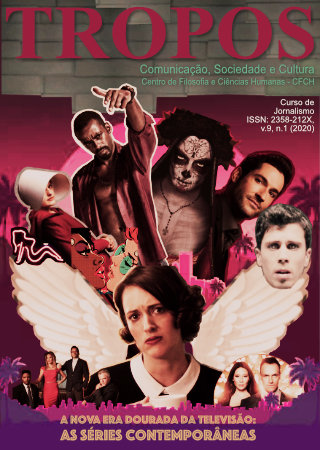BADA BING! THE SOPRANOS AND QUIXOTIC REALISM
Keywords:
The Sopranos; Quixotic; DeCavelcante; Byronic HeroAbstract
Often considered the television series that brought about the second golden age of television, The Sopranos can be viewed as a quixotic narrative. This is especially true when looking at the sixth and final season of the series, with particular focus on the final sequence of the series finale, titled “Made in America.” Not only is the entire series quixotic through its acknowledgement of the impact of real-life East coast Italian-American mafia families and previous cinematic portrayals of mob life, the most noteworthy being The Godfather trilogy and Goodfellas, but also through its Byronic hero, Anthony “Tony” Soprano. Furthermore, the series finale of The Sopranos invites audience participation through the act of leaving the narrative open – no member of the audience knows exactly what happened to their beloved Byronic hero and are left to their own devices to craft an individual conclusion. Through the acts of calling back to the nonfictional and cinematic renditions of mobster life and culture, including a Byronic hero as the series’ protagonist, and through the act of inviting audience participation to conclude the much beloved series, The Sopranos proves itself to be a modern quixotic mobster crime drama.
References
“All Due Respect.” The Sopranos, created by David Chase, season 5, episode 13, HBO, 6 June 2004.
“Boca.” The Sopranos, created by David Chase, season 1, episode 9, HBO, 7 Mar. 1999.
COPPOLA, Francis Ford, director. The Godfather Trilogy. Paramount Pictures.
EDGERTON, Gary R. The Sopranos. Detroit: Wayne State UP, 2013. Print. TV Milestones Ser.
“Isabella.” The Sopranos, created by David Chase, season 1, episode 12, HBO, 28 Mar. 1999.
LAVERY, David. This Thing of Ours: Investigating the Sopranos. New York : London: Columbia UP ; Wallflower, 2002. Print.
LAMPE, Klaus. "Made Men: The True Rise-and-fall-story of a New Jersey Mob Family." Trends in Organized Crime 10.2 (2006): 108-09. Web.
“Made in America.” The Sopranos, created by David Chase, season 6, episode 21, HBO, 10 June 2007.
“Pilot.” The Sopranos, created by David Chase, season 1, episode 1, HBO, 10 Jan. 1999.
POLAN, Dana B. The Sopranos. Durham, N.C.: Duke UP, 2009. Print. Console-ing Passions Book Ser.. Spin Offs.
POOLE, Gabriele. "The Byronic Hero, Theatricality and Leadership." The Byron Journal 38.1 (2010): 7-18. Web.
SCORSESE, Martin, director. Goodfellas. HBO, Warner Brothers, 1990, play.hbogo.com/feature/urn:hbo:feature:GW2nosAwYxsNOkQEAAAWG.
The Sopranos. Created by David Chase, HBO, 1999 - 2007.
STEIN, Atara. The Byronic Hero in Film, Fiction, and Television. Carbondale: Southern Illinois UP, 2004. Print.
THORSLEV, Peter Larsen, and THORSLEV, Peter L. The Byronic Hero: Types and Prototypes. Minneapolis: U of Minnesota, 1962. Print.
VAAGE, Margrethe Bruun. The Antihero in American Television. 2015. Routledge Advances in Television Studies ; 3. Web.
VINCENT, Christopher J. Paying Respect to The Sopranos: A Psychosocial Analysis. Jefferson, N.C.: McFarland, 2008. Print.
WILLIAMSON, Marcus. “John Riggi: Leader of the DeCavalcante Crime Family – the Notorious Real-Life Inspiration for 'The Sopranos'.” The Independent, 8 Aug. 2015, www.independent.co.uk/news/obituaries/john-riggi-leader-of-the-decavalcante-crime-family-the-notorious-real-life-inspiration-for-the-10446466.html.
Downloads
Published
How to Cite
Issue
Section
License
Transferência de direitos autorais:
Declaro que após aprovado para publicação a Revista Tropos editada pela Universidade Federal do Acre (UFAC), passará a ter os direitos autorais do trabalho, que se tornarão propriedade exclusiva da Revista, sendo permitida a reprodução total ou parcial desde que devidamente referenciada.

